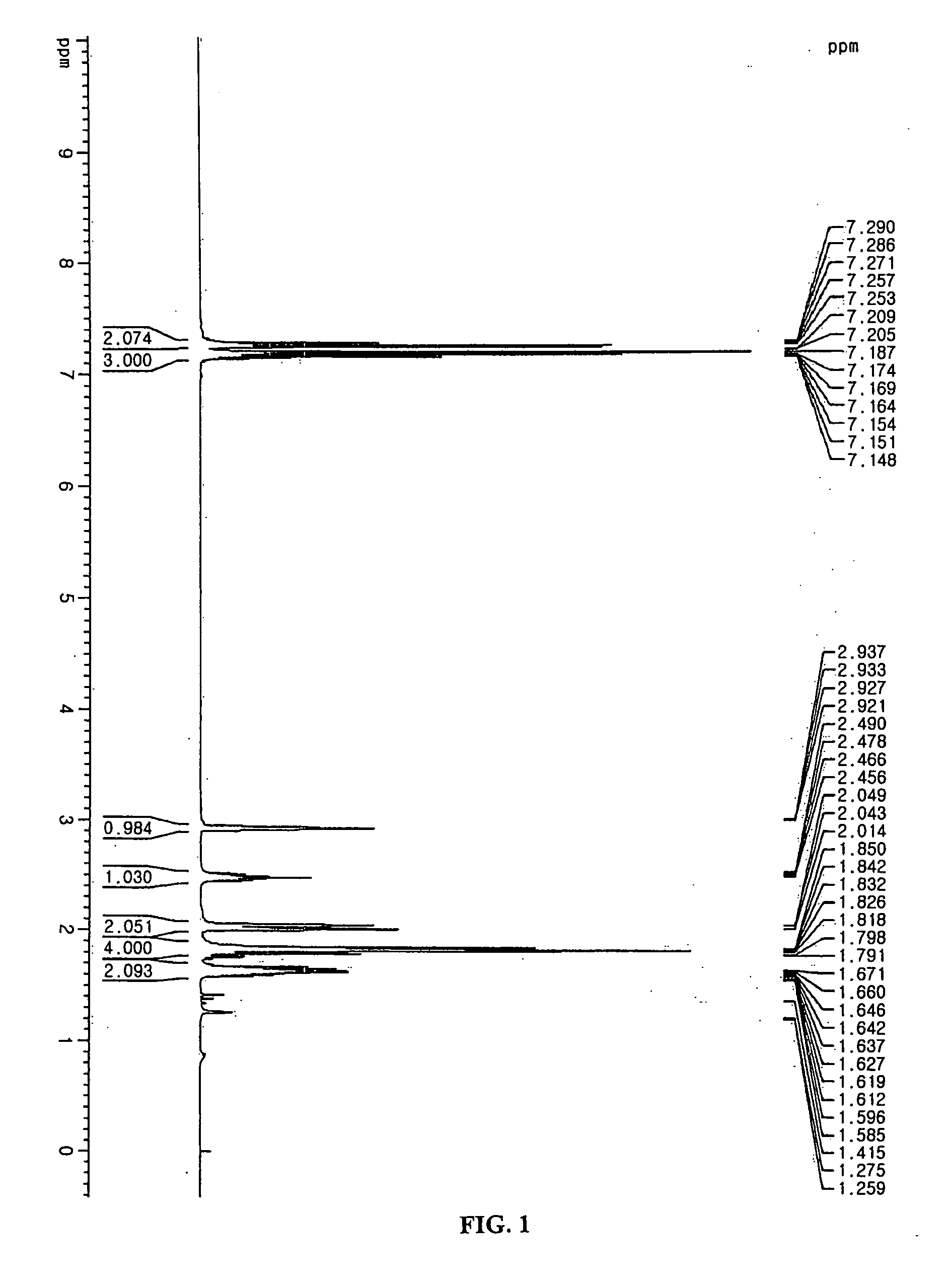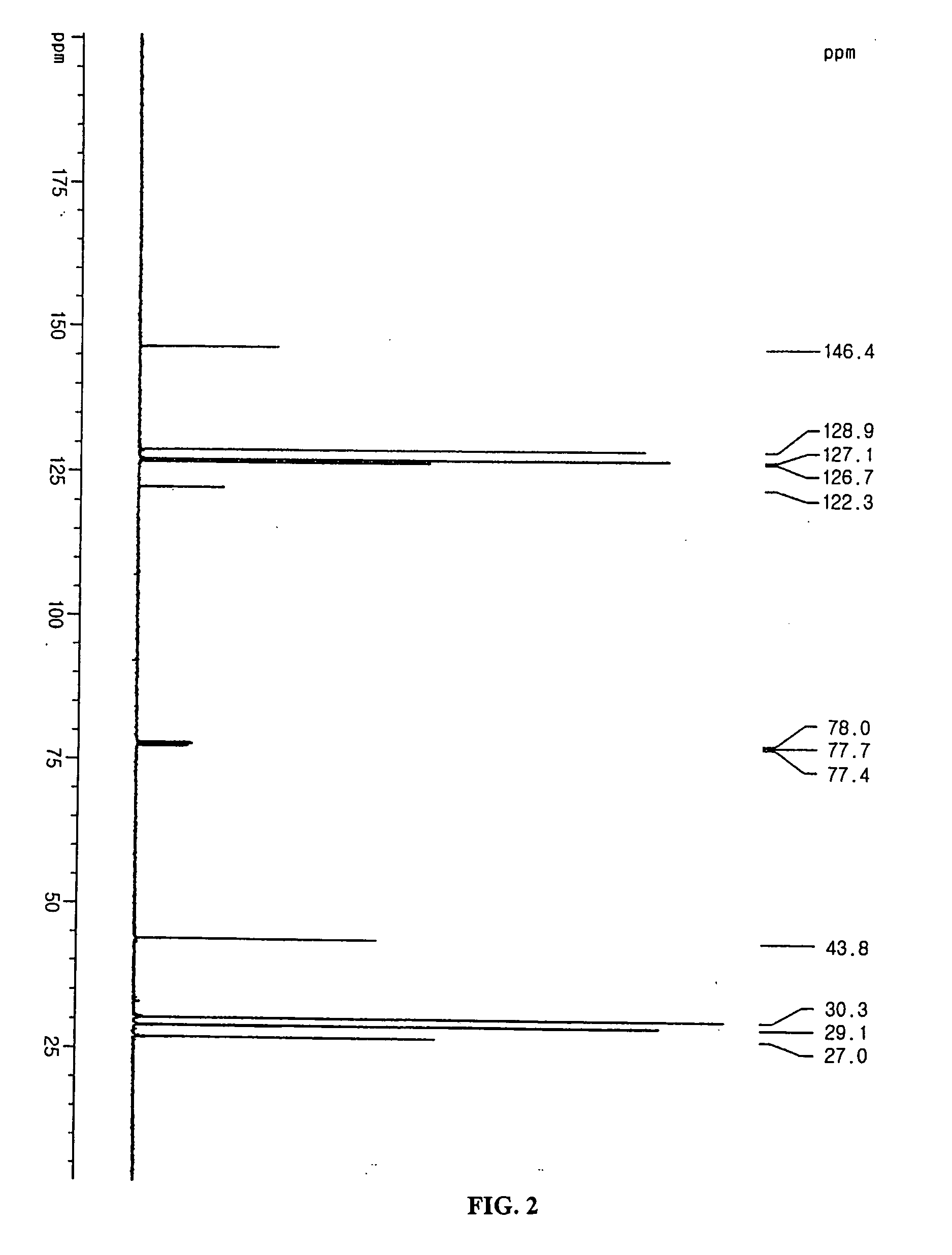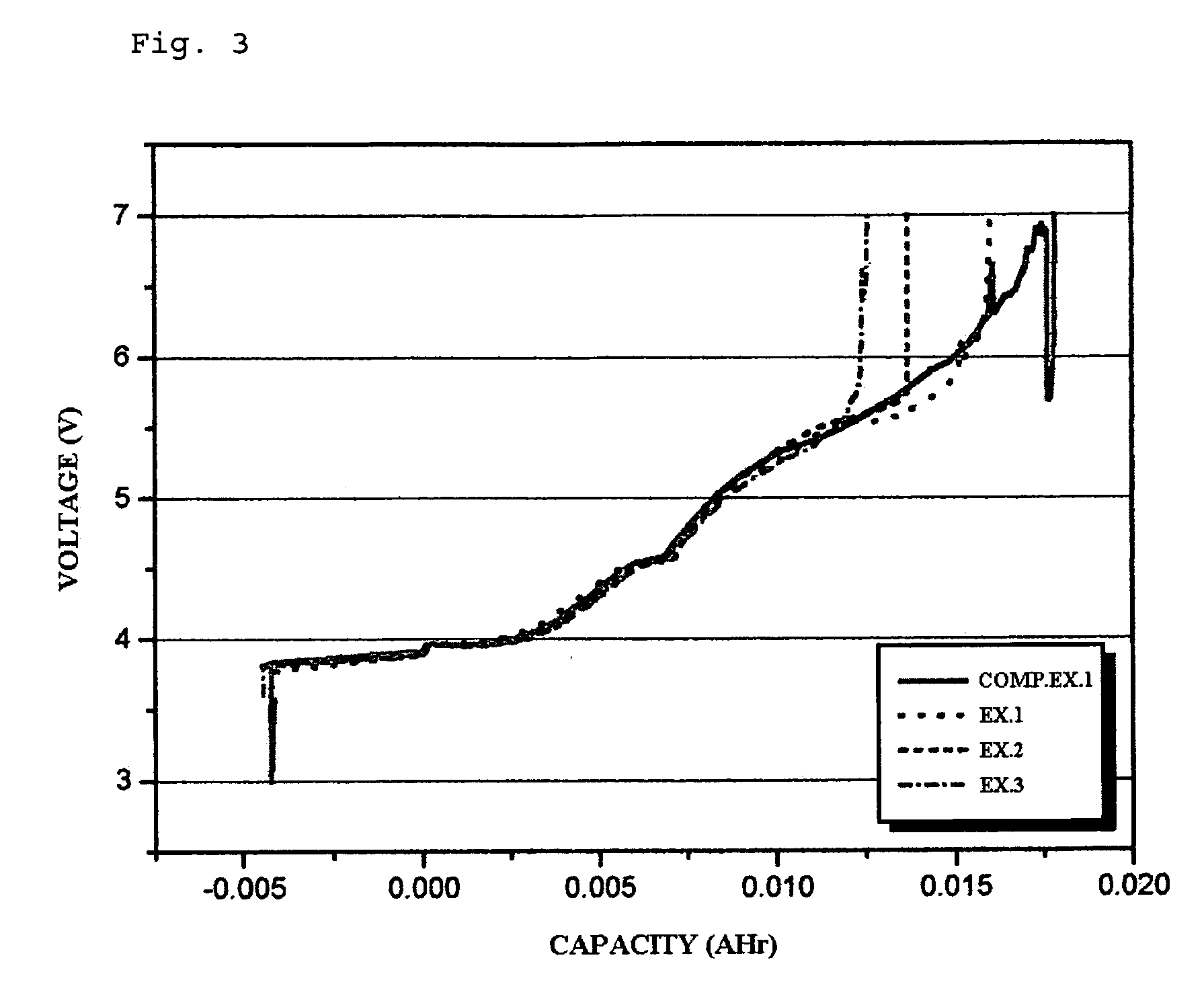Additive for non-aqueous electrolyte and secondary battery using the same
a technology of non-aqueous electrolyte and additive, which is applied in the direction of non-aqueous electrolyte cells, oxide conductors, non-metal conductors, etc., can solve the problems of safety problems, lithium secondary batteries have a safety problem, and the above-mentioned problem becomes more serious, so as to improve the safety of the battery and achieve synergistic
- Summary
- Abstract
- Description
- Claims
- Application Information
AI Technical Summary
Benefits of technology
Problems solved by technology
Method used
Image
Examples
example 1
[0057] The electrolyte used in this example was 1M LiPF6 solution containing EC:EMC=1:2 (v:v). To the electrolyte, the compound represented by formula 5 was added in an amount of 2.0 wt %. LiCoO2 and artificial graphite were used as a cathode active material and an anode active material, respectively. Then, a coin type battery was manufactured by using a conventional method.
examples 2
[0058] Example 1 was repeated to provide a battery, except that the compound represented by formula 5 was added to the electrolyte in an amount of 0.5 wt % and CHB (cyclohexylbenzene) was further added thereto in an amount of 1.5 wt %.
example 3
[0059] Example 1 was repeated to provide a battery, except that the compound represented by formula 5 was added to the electrolyte in an amount of 0.5 wt % and CHB (cyclohexylbenzene) was further added thereto in an amount of 2.0 wt %.
PUM
| Property | Measurement | Unit |
|---|---|---|
| Safety-related properties | aaaaa | aaaaa |
Abstract
Description
Claims
Application Information
 Login to View More
Login to View More - R&D
- Intellectual Property
- Life Sciences
- Materials
- Tech Scout
- Unparalleled Data Quality
- Higher Quality Content
- 60% Fewer Hallucinations
Browse by: Latest US Patents, China's latest patents, Technical Efficacy Thesaurus, Application Domain, Technology Topic, Popular Technical Reports.
© 2025 PatSnap. All rights reserved.Legal|Privacy policy|Modern Slavery Act Transparency Statement|Sitemap|About US| Contact US: help@patsnap.com



